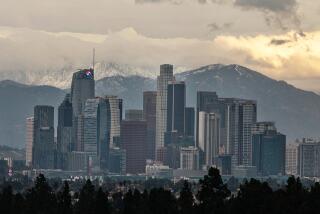Junk Bond Defaults Reach Record High in First Quarter
- Share via
Defaults on junk bonds reached record levels in the first quarter of 1991 and are headed for another record year, according to two reports issued Monday.
Moody’s Investors Service said a total of 32 companies defaulted on $8.2 billion in “speculative grade” bonds during the first quarter, compared to 19 defaults worth $5.7 billion a year ago. In the comparable period of 1989, only 13 companies defaulted on $1.3 billion in bonds, Moody’s said.
The Bond Investors Assn., a nonprofit bondholder group that tracks defaults on corporate and municipal bonds, came to the same conclusion but differed on the numbers. The Miami Lakes, Fla.-based organization maintains that 28 companies defaulted on $11 billion worth of bonds--an 83% hike from year-ago levels.
The numbers differ because not all rating services track the same bonds. There is no one definitive source on the junk bond market.
Nevertheless, nearly everyone agrees about the trend: 1991 is sure to be the worst year yet for junk bond defaults.
“These are a direct result of a large number of thinly capitalized transactions done in the 1980s that are working their way through the system,” said Marko Budgyk, chief investment officer of Houlihan, Lokey, Howard & Zukin Investment Management in Los Angeles.
The reports come at a time when the junk bond market has shown some improvement. But the uptick is not likely to last.
“Given the fact that there has been no slowdown in defaults, the recent rally in junk prices will be short-lived,” said Richard Lehmann, president of the bondholder group and editor of the Defaulted Bonds Newsletter.
Companies issuing these high-risk, high-yield bonds have also been hurt by the souring economy and a tightening credit market, he said.
“The new-issue market for junk bonds is dead, so the opportunity to refinance these deals is gone,” Lehmann added. “And banks are going through their own crisis, so they are not willing to be the lender of last resort either.”
All of this has also depressed market values for bonds in default. Where bond investors could generally recover 40 cents on the dollar for bonds that defaulted between 1974 and 1990, they are now only able to recover 28 cents, according to Moody’s.
Since fewer investors are interested in buying junk bonds, the resale market is likely to stay depressed through 1991, Moody’s said.
The good news is that many believe that the default rate is peaking and will start to slide as early as this summer. “I think we are probably at the peak now,” Lehmann noted. “We will probably keep up this pace for another quarter, but then it will begin to fall off.”
Added Budgyk: “The memories of what has happened in the last few years will be prominent in the minds of bankers and investment bankers, which will cause a trend toward conservatism. I think it is very unlikely that we’d head toward a repeat.”
The defaults on corporate junk bonds has also adversely affected the municipal bond market. Companies defaulting on junk bond issues also defaulted on $489 million in municipal issues, the investors’ association said.
“Conditions are ripe for such municipal defaults,” the group said.
The association also noted that there could be possible defaults on $1.7 billion of various municipal taxable issues backed by solely by guaranteed investment contracts issued by Executive Life Insurance Co. of Los Angeles.
BOND DEFAULTS Top 10 bond defaults in the first quarter of 1991
USG Inc.: $1.530 billion
McCrory Corp.: $1.298 billion
E-II Holdings: $1.235 billion
Charter Medical: $1.117 billion
Bank of New England: $1.107 billion
TWA: $870 million
Insilco: $603 million
Pan Am: $445 million
Heileman Brewing: $380 million
Carter Hawley Hale: $350 million
Source: Bond Investors Assn.
More to Read
Inside the business of entertainment
The Wide Shot brings you news, analysis and insights on everything from streaming wars to production — and what it all means for the future.
You may occasionally receive promotional content from the Los Angeles Times.










